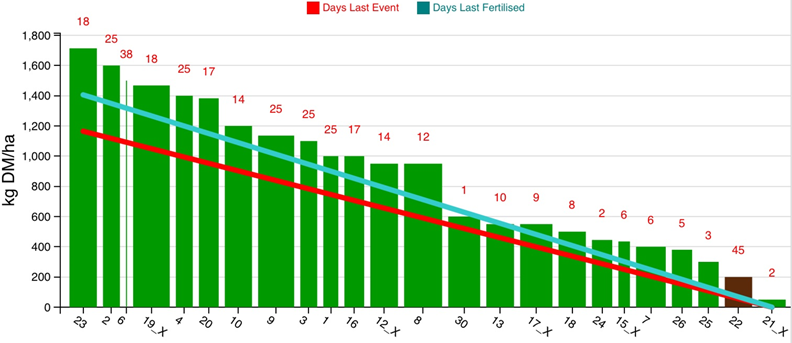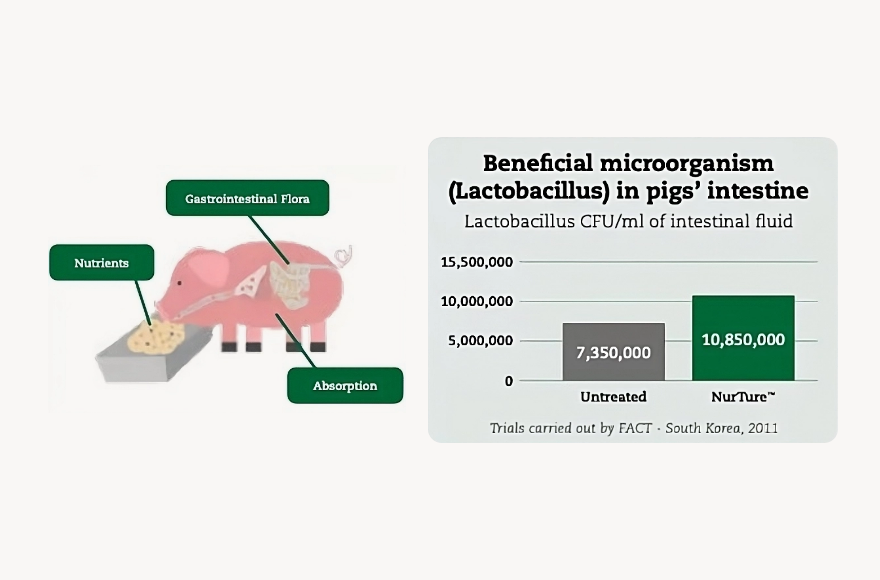June 18th 2020:
Apologies for not being able to update last week – things were hectic!
Farm Cover (Kg DM/Ha): 838
Growth Rate (Kg DM/Ha): 44
L.U./Ha: 3.58

The lack of rain is biting here and grass is getting tight. We are feeding aftergrass by day, pre-mowed stemmy paddocks by night, 4 kgs of meal, and achieving 1.95 kgs of milk solids. Milk protein has improved since the aftergrass came in. 16 units/acre of liquid urea is being used currently on grazing paddocks. Second cut ground got ½ bag of ammonium sulphate/acre as liquid + carbon source. plus 2500 gal/acre of watery slurry through the trailing shoe.
Boron:
The comprehensive soil tests we took back in 2017 revealed a shortage of readily available boron across the farm. Normally you would hear of boron being used in root crops and beet but we are told that boron needs to be at a minimum level also for grass – not necessarily for grass growth but for root mass and root depth. We need deep roots to help improve soil structure and access nutrients deep in the soil profile. Boron is needed to help roots repair damage at the root tips when they are burrowing into the soil – a lack of boron will therefore hinder root growth. This is why we apply Boron through our Tow And Fert once a year across all the ground. It can be bought as a powder or as a liquid so a normal farm sprayer allows you to put it out also. On light soils it is important to put a carbon source with Boron to prevent it leaching away.
There is a fascinating article from New Zealand online detailing how very small amounts of foliar applied Boron can reduce MUN levels in milk see – https://www.ruralnewsgroup.co.nz/dairy-news/dairy-management/foliar-applied-boron-can-reduce-milk-urea
Next week – grass growth update.
June 4th:
Delighted with the farm walk this week and as expected the inch of rain two weeks ago really kicked in and growth rates moved on:
Farm Cover (Kg DM/Ha): 946
Growth Rate (Kg DM/Ha): 90
L.U./Ha: 3.58
We are still applying about 15 units/acre of foliar urea so really happy with growth rates considering the relatively low rate of nitrogen used. Foliar urea is a much more efficient way of using the nitrogen we buy and gives us the added flexibility of topping up with nutrients like Boron for example which we will start adding to the mix over the next few weeks.

The importance of slurry:
Slurry gives us a great response in growth rates on this farm especially in the spring time and we do our upmost to utilise every gallon of it. We started using Slurrycal back in 2016 and have used it every year since to biologically treat the slurry. We find that the smell is greatly reduced as is agitation and the growth response has increased. We invested in a trailing shoe in 2017 and now use that to help us skip some fertiliser early in the year. Grazing fields with low covers in the spring time will get a round of slurry at around 2 – 2,500 gallons/acre with nitrogen skipped then for that round and again during the year when the weather is suitable. We try our best to apply when ground condition will allow the slurry to be utilised fully – not too wet, dry or sunny!
Last year we tested slurry again to see what the nutrient profile was and it reinforces the value of this valuable product.

We are often told that slurry has about 7 – 10 units of nitrogen available. What we aren’t told is that there could be double that figure in organic nitrogen also there that has the potential to be utilised at a future date when it becomes mineralised and available for growth. Potash is an expensive fertiliser to buy so when you know that every 1,000 gallons of slurry has 26 units of Potash available and a further 3 units that potentially will go into soil reserves you learn to respect the value of what you are storing and spreading. All our silage ground receives 2,500 gallons/acre to ensure the potash we remove is put right back – our soil Potash levels tend to be on the lower side as are our Potash “reserves”.
On a like for like basis with bagged fertiliser our slurry is worth €25/1000 gallons – like bagged fertiliser not all the nutrients spread will get utilised immediately. Some, like Phosphorus will get bound to calcium and end up in “reserves” in the soil. In terms of immediate availability of nutrients our slurry is worth €17/1,000 gallons. These figures do not take into account the other nutrients present like calcium, magnesium, trace elements and the very high amount of carbon also present which is invaluable for building healthy soils – none of which come in a typical bag of fertiliser.


